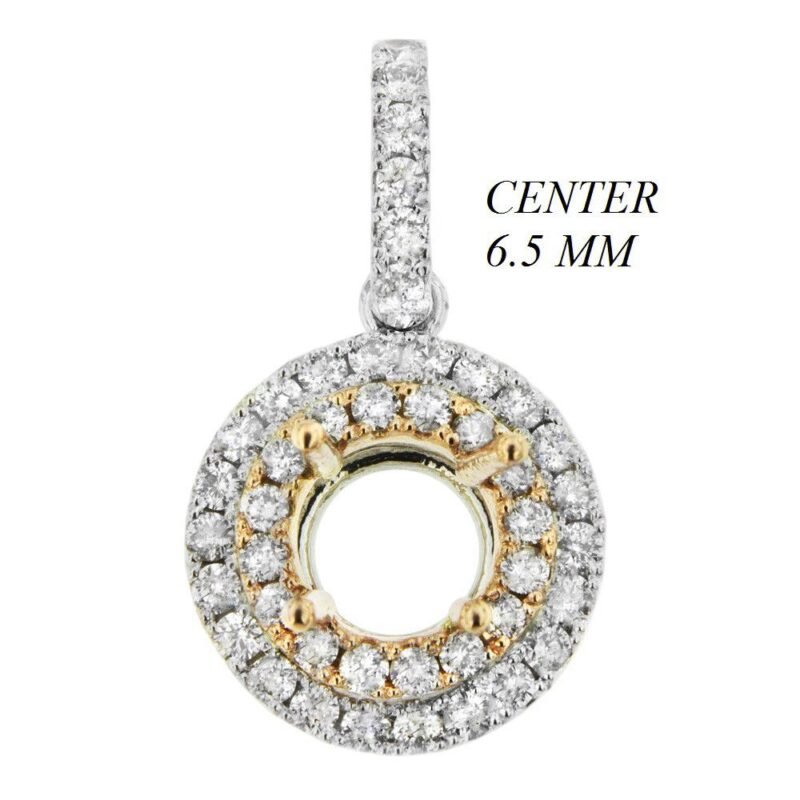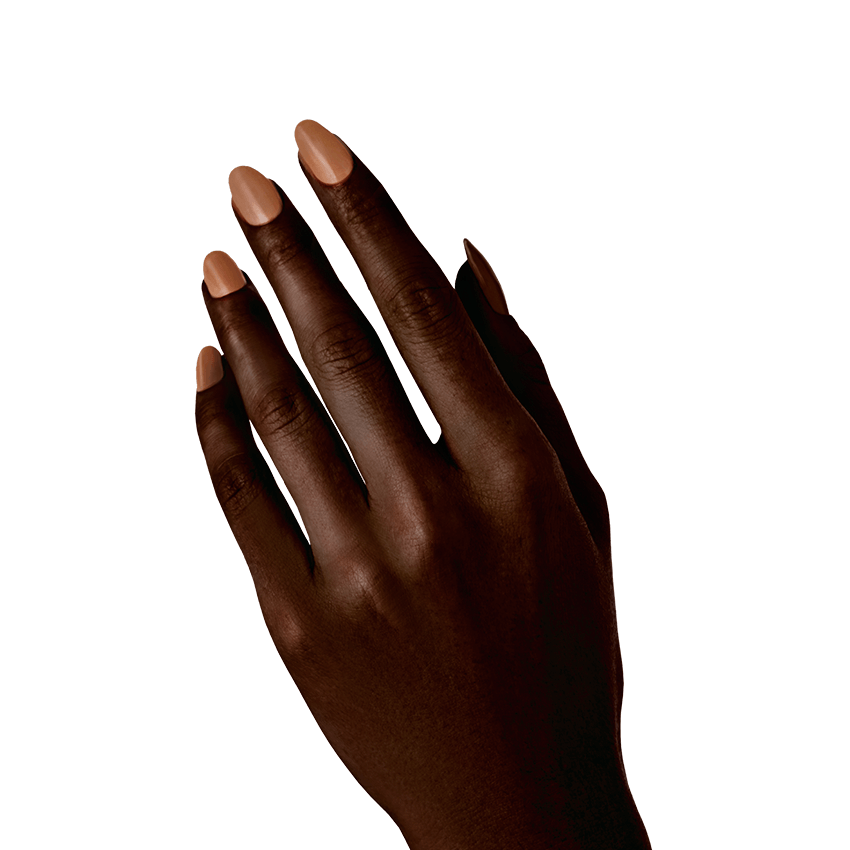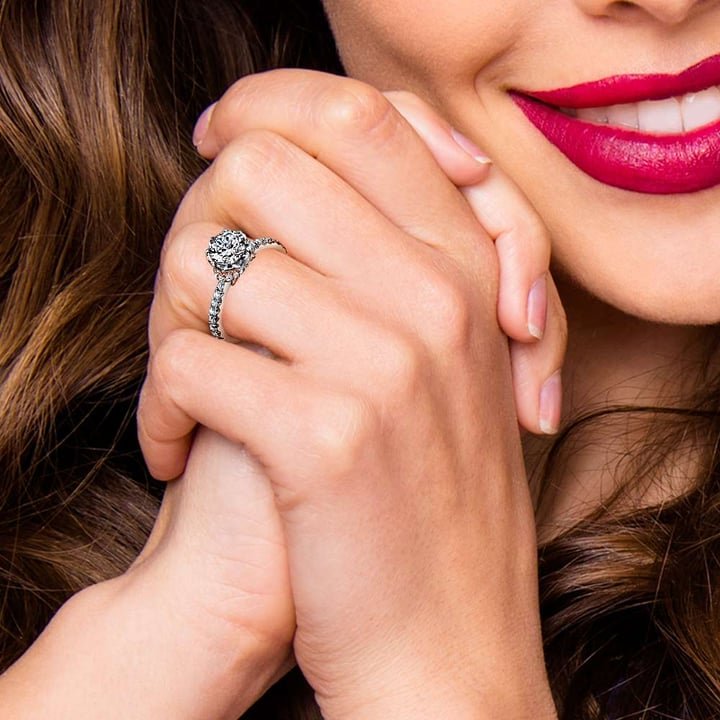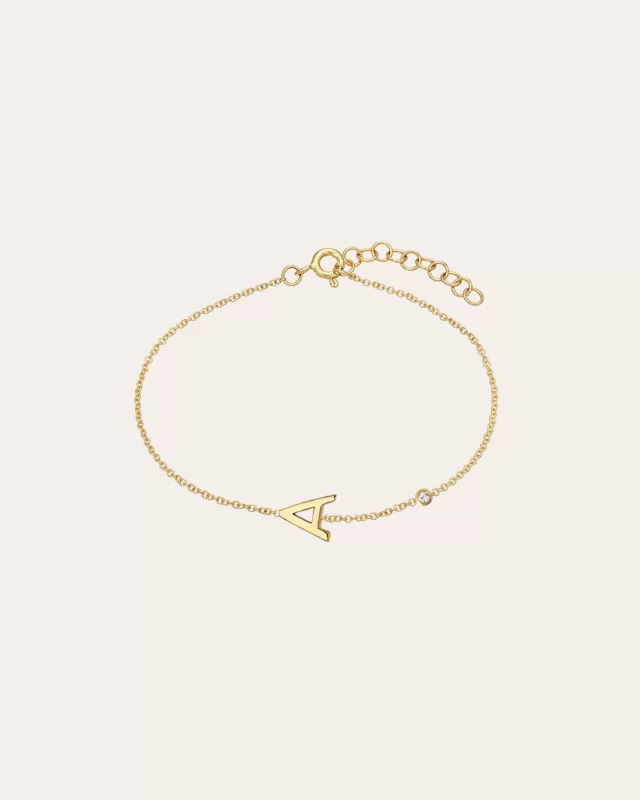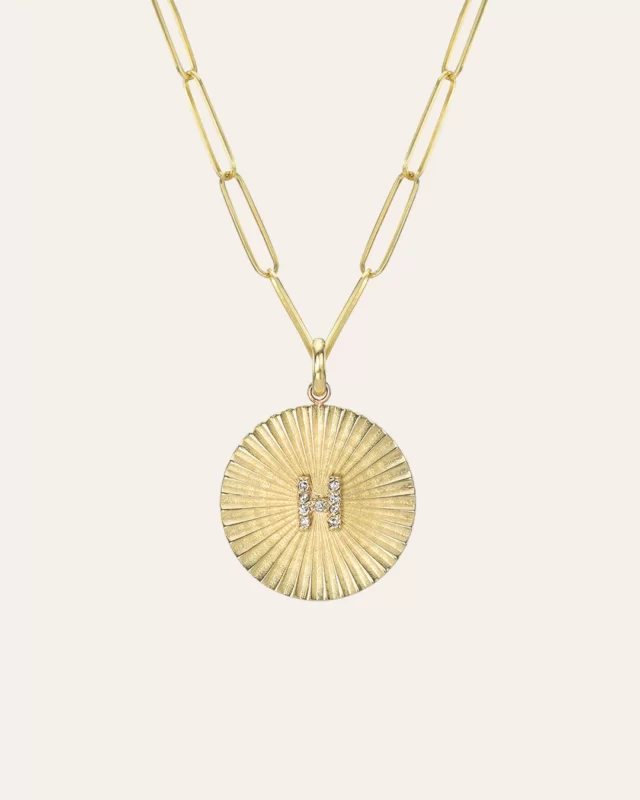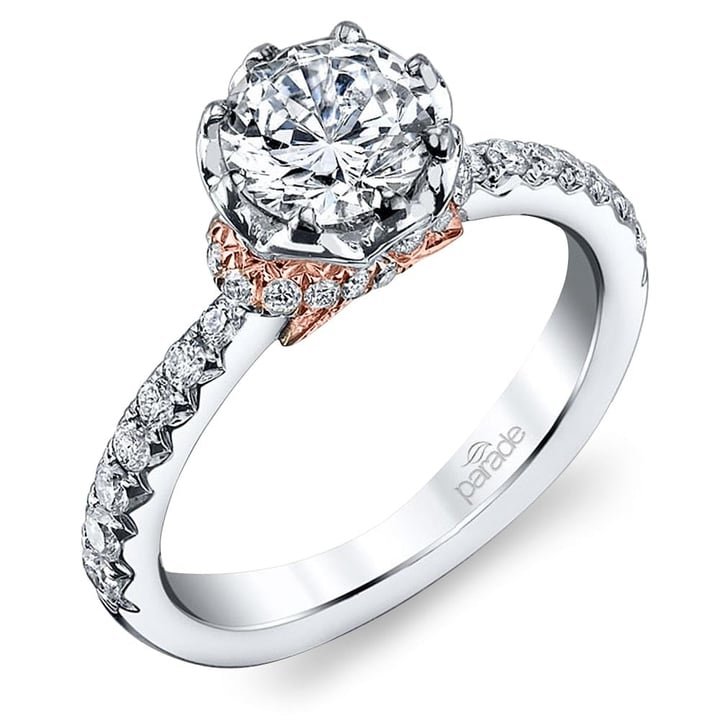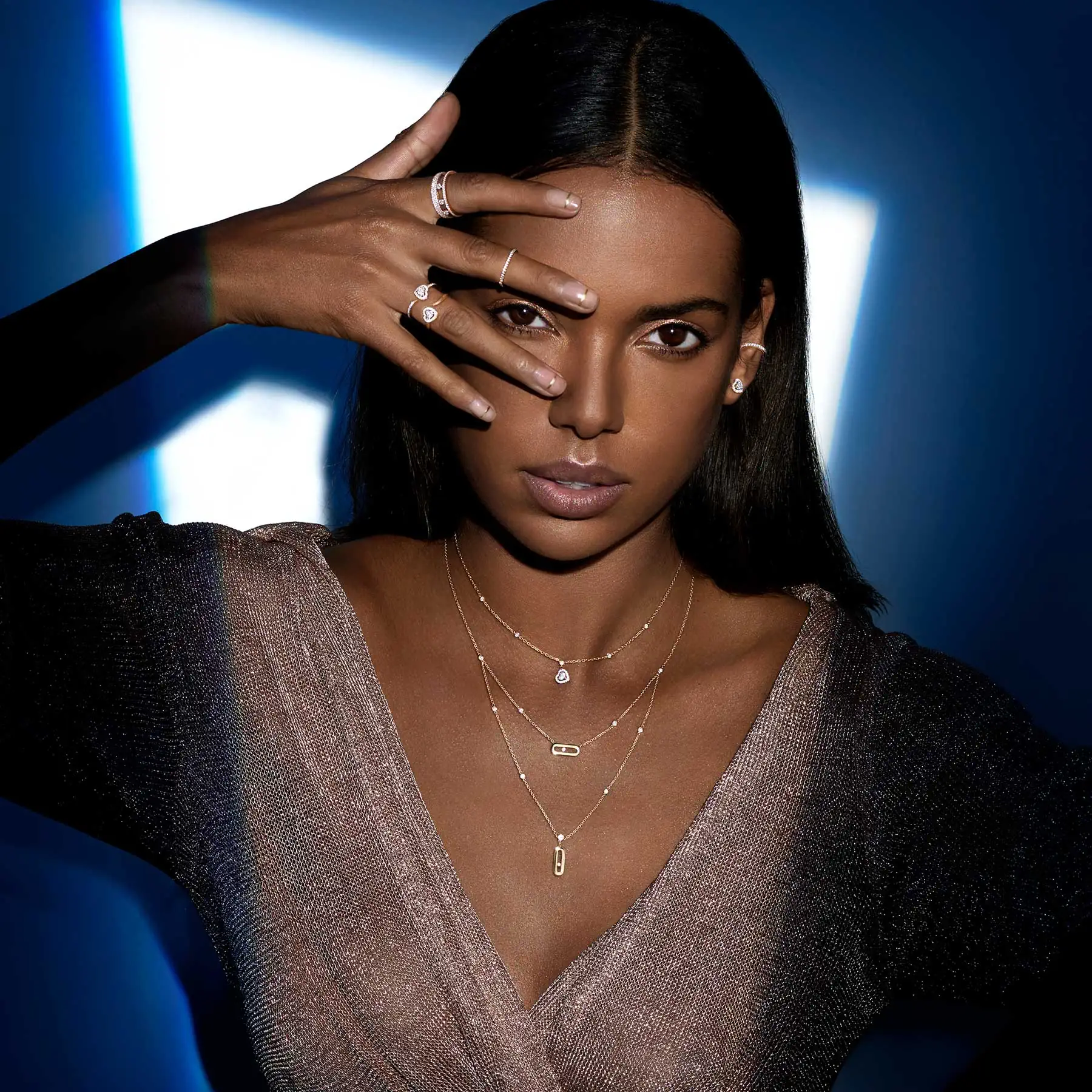Diamond Cut

Diamond cut refers to how well-proportioned the diamond's dimensions, symmetry, and polish are. The diamond cut is the most important characteristic of the 4Cs as it determines the diamond's brilliance, fire, and sparkle. The diamond cut also significantly impacts the diamond's overall appearance and value.
The quality of the cut defines how well a diamond interacts with light, while high marks of color or clarity also affect its overall appearance.
It is also important to note that diamond cut and shape are different and often need to be clarified and used interchangeably. However, they are two very different concepts. If you want to know more about diamond shapes,
Diamond Cut Chart
The Diamond Cut Scale contains five grades ranging from Poor to Excellent. The cut grade of a diamond directly impacts its beauty; if a diamond is cut and polished correctly, it will have a much more desirable appearance, even when compared to diamonds of higher color and clarity grades.

Light's Effect on a Diamond
There are many factors that affect the brilliance of a diamond, the most important of which is its ability to reflect light:
Reflection
When light enters the surface of a diamond, a portion of the light reflects immediately back out of the table (top).

Reflection
The remaining rays of light travel into the center of the diamond and bounce off its internal walls.

Reflection
As light exits the diamond, dispersion causes the white light to be separated into multiple colors.

A Diamond's Depth
Why is a diamond’s depth so important, and how is it determined? Diamond depth is the height of a diamond in millimeters measured from its table (top) to its culet (bottom). The depth percentage measures the ratio of a diamonds depth to its total width. Depth can significantly impact the quality of a diamond’s cut and the amount of light it reflects.

Shallow-Cut Diamonds
A shallow cut diamond allows light to escape from its sides instead of reflecting off its top.

Ideal-Cut Diamonds
This premier cut style is well-proportioned and carefully angled to achieve a luminous appearance.

Deep-Cut Diamonds
A diamond whose cut is too deep will look smaller than diamonds of similar carat weight.


Polish & Symmetry
Diamond polish and symmetry are critical components to cut quality. For maximum brilliance, every facet of a diamond should be polished after the cutting process. A symmetrical diamond will have well-balanced and properly aligned facets. If the facets are not symmetrical or not optimally shaped, they’ll display less sparkle.
Parts of a Diamond
A diamond is comprised of five main parts that affect its shape and radiance. Knowing these terms will help you understand the important components to consider when selecting a diamond. See also our Diamond Buying Guide Chart.

Table & Table Percentage
A diamond’s table is the largest facet of the stone, comprising the flat surface on the top. The table percentage is the ratio of the width of the diamond’s top facet in relation to the width of the entire stone. The right ratio results in a large amount of fire and brilliance. To learn about the ideal table percentage for each diamond shape, visit our Diamond Shape page.
Crown
This is the top portion of the diamond, located above the girdle and extending below the table.
A diamond’s crown extends from the top of the stone (the ‘table’) down to the girdle (the widest point of the diamond). Crowns can be comprised of step cut facets or brilliant cut facets.


Girdle
Forming the outer edge of the diamond, this is where the crown and the pavilion meet and is the widest part of a diamond.
This is the portion of the diamond between the crown and the pavilion, essentially spanning the width of the stone from side to side. The measurement of the girdle represents the perimeter of the diamond. A diamond’s girdle can be rough, polished, or faceted, and does not typically affect the quality or appearance of the stone.
Pavilion
Located at the bottom of the diamond, the pavilion bridges the girdle and the culet and form at the bottom (culet).
Located between the girdle and the culet (point), the pavilion is integral to the stone’s light reflecting properties. A properly cut pavilion will allow the maximum amount of light to reflect from the surface of the stone. An excessively deep or shallow diamond can cause light to escape out of the bottom and sides, reducing its sparkle.


Culet
The smallest facet of a diamond, the culet is located at the very bottom of the stone. If the diamond ends in a point, the diamond grading report will show a value of ‘None’ for the culet designation. This small facet was originally intended to protect the diamond’s pavilion, although today’s settings are usually strong enough to render it unnecessary.
Diamond Size FAQs
The best diamond cut or shape is subjective as it can vary depending on your personal preference and intended use of the diamond. However, the brilliant round cut is the most popular diamond shape chosen. The round brilliant is designed with 58 triangular-shaped facets and a perfectly symmetrical shape and is the most radiant cut because it returns the maximum sparkle and brilliance to the viewer.
The diamond cut is the most significant factor of a diamond's price tag. Diamonds with higher cut grades will generally be more expensive than the lower grade ones.
Diamonds with "Excellent" cut grades are precious and expensive. However, the most costly diamond is not solely based on the cut quality alone but on combining the other 4C's—color, clarity, and carat weight. In terms of specific diamond cuts, the brilliant round diamond is considered the most expensive due to its popularity, high demand, and maximum sparkle. However, other fancy cut diamonds such as emerald, cushion, oval, and princess cut diamonds can also be expensive when cut to the highest standards and paired with excellent color and clarity grades.


